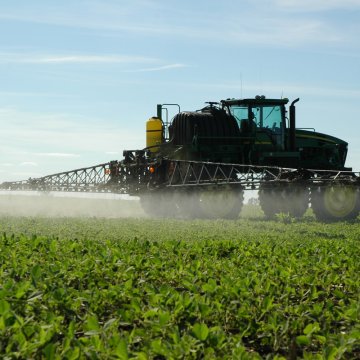Explore our blog featuring articles about farming and irrigation tips and tricks!
What You Need To Know About Pesticide Use On The Farm

By: Terri Queck-Matzie
Pesticides serve many functions and come in many forms, including herbicides, insecticides, and fungicides. The ultimate goal in all cases is to increase crop yields by reducing competitive environmental factors.
Weeds, bugs, and disease steal a plant’s health and nutrients, reducing its productivity. Pesticides can help, if used properly.
APPLYING HERBICIDES FOR WEED CONTROL
Herbicides reduce weed competition. The products on the market are many and varied. One of the more popular herbicides is dicamba. Dicamba kills annual and perennial broadleaf weeds by increasing plant growth rate until it outgrows its supply of nutrients and dies.
Use of dicamba has increased with the introduction of Monsanto’s genetically modified dicamba resistant plants.
Older formulas of the herbicide have been known to create problems with drift onto other plants. Newer, less drift prone versions are now available. New EPA-approved labels for the 2019-2020 growing seasons offer revised instructions for use.
When applying dicamba, there are steps farmers can take to increase effectiveness and reduce environmental impact, beginning with selecting the right product for the right crop. For Round-up Ready soybeans, use only approved formulas, and make sure the applicator is properly certified. Most state extension services offer the necessary annual pesticide applicator training.
Stay up to date on all T-L news and get alerts on special pricing!


